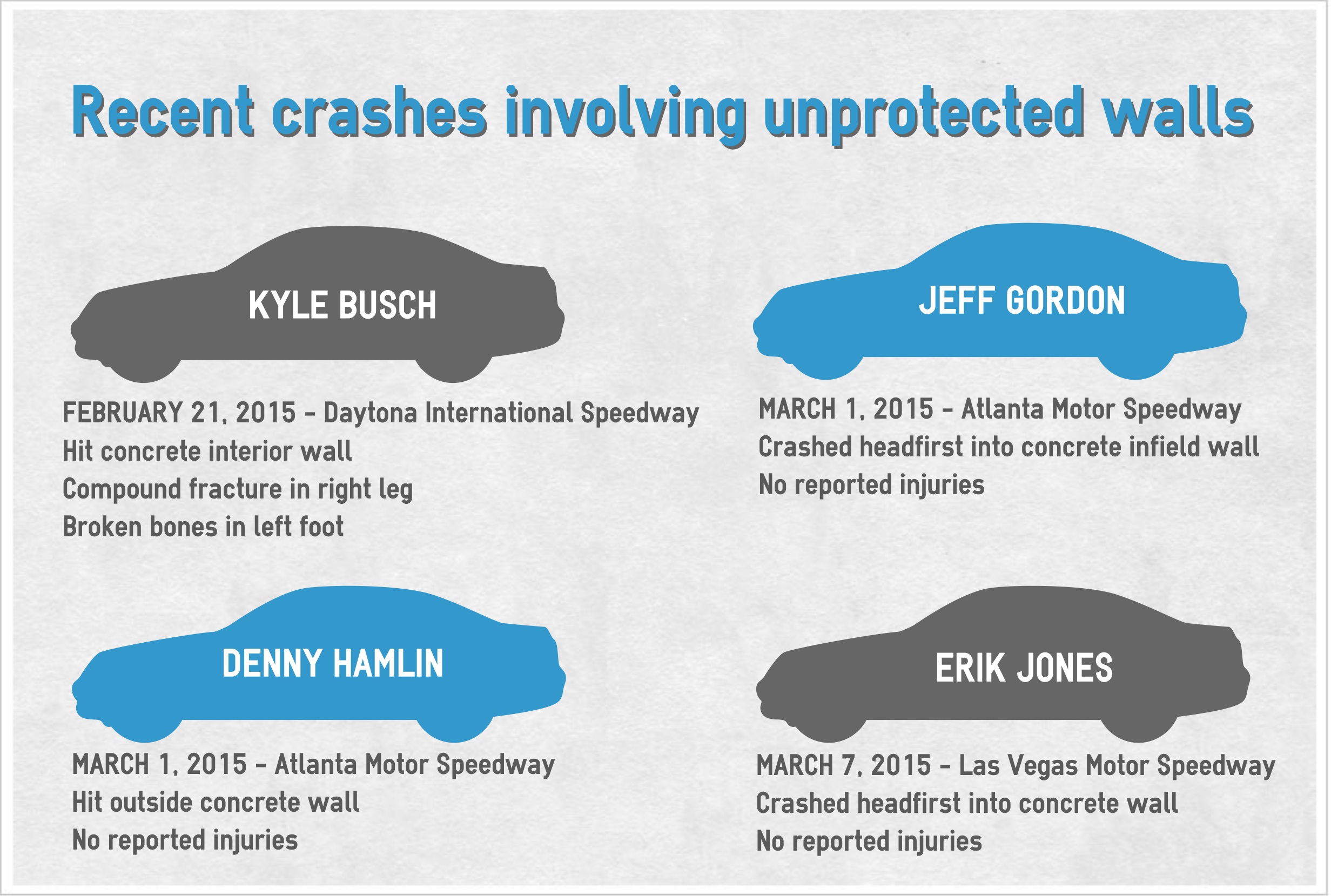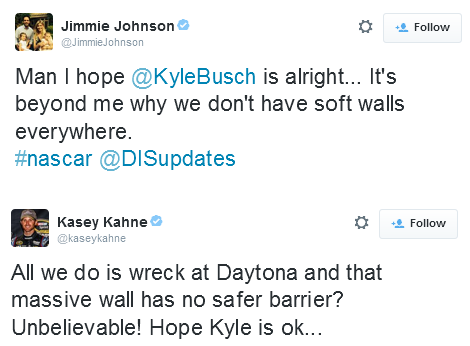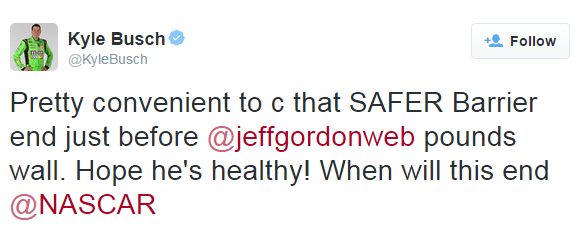HOW NASCAR DRIVERS CAN PROTECT THEMSELVES WHEN THE SPORT DOESN’T
All it takes is once.
The saying applies to a lot of situations, but apparently, it doesn’t apply to the amount of crashes needed to prompt NASCAR to increase safety measures and protect its drivers.
In less than a month, NASCAR has seen four of its drivers crash into unprotected walls. This recent string of accidents began during the season-opening Xfinity Series race at Daytona International Speedway on February 21.
A multi-car crash sent star driver Kyle Busch into an interior wall that did not have a Steel and Foam Reduction (SAFER) barrier, resulting in a broken right leg and broken left foot.

“SAFER (Steel And Foam Energy Reducing) barriers have been part of NASCAR racing since they were used for the first time at Indianapolis Motor Speedway in 2002. The barriers were a key part of an industry-wide offensive on safety after the 2001 death of Dale Earnhardt Sr. (at Daytona International Speedway) followed the deaths of three other drivers (Adam Petty, Kenny Irwin Jr. and Tony Roper) in other NASCAR wrecks that involved hard crashes into concrete walls.” (via USA Today)
The barriers are typically installed along parts of the track walls where impacts are most likely to occur. Officials have repeatedly stated it’s virtually impossible to fully protect every area in which an accident may happen, and often cite cost as a controlling factor. SAFER barriers are reported to cost $500 per square foot, which amounts to a whopping $2.6 million to install them through a mile of the track.
However, it’s not uncommon for barriers to be added or altered after an accident. The Auto Club Speedway added a SAFER barrier to the wall Denny Hamlin crashed into in March 2014, resulting in a broken back. Daytona track president Joie Chitwood also assured that Daytona would install SAFER barriers on every inch of its property, instead of only in highly anticipated crash areas.
Some drivers took to Twitter to express their frustration over the absent barriers:


Jeff Gordon, who is set to retire at the end of the season, will meet with NASCAR this week to discuss safety issues.
“I’m looking forward to getting together with them to hear a little bit more detail in that progress,” said Gordon. “I don’t want to allude to too much because I have just enough details to get myself in trouble by bringing them up because I don’t have the full scope of it. I would prefer to have the full scope of it. I think that the most important thing is just to continue to see progress.” (via Fox Sports)
High limit disability insurance protects the driver from sudden catastrophic losses.
Special protection just isn’t an option for NASCAR drivers. While NASCAR contemplates its next move to increase safety measures, drivers need to arm themselves with high limit disability insurance.
Unlike other professional sports, NASCAR has no driver’s union and no pension plan. The association does provide medical coverage, but professional stock car drivers are responsible for their own life insurance, retirement plans and disability coverage.
High limit individual disability insurance policies can pay a substantial portion of a driver’s salary if he or she is temporarily disabled or replace some of those projected mega earnings if that driver cannot return to the track because of a permanent injury or chronically disabling medical condition.
The disabling condition might be broken bones, nerve damage, impaired vision or post-concussion symptoms from a crash, or it might be a serious ailment or an accident unrelated to racing.
Our strong advice to all professional athletes, regardless of the sport: sit down, talk with your agent, financial planner, sponsors and owners and learn about career-ending permanent disability protection, loss of endorsement or sponsor coverage and permanent total disability policies.


